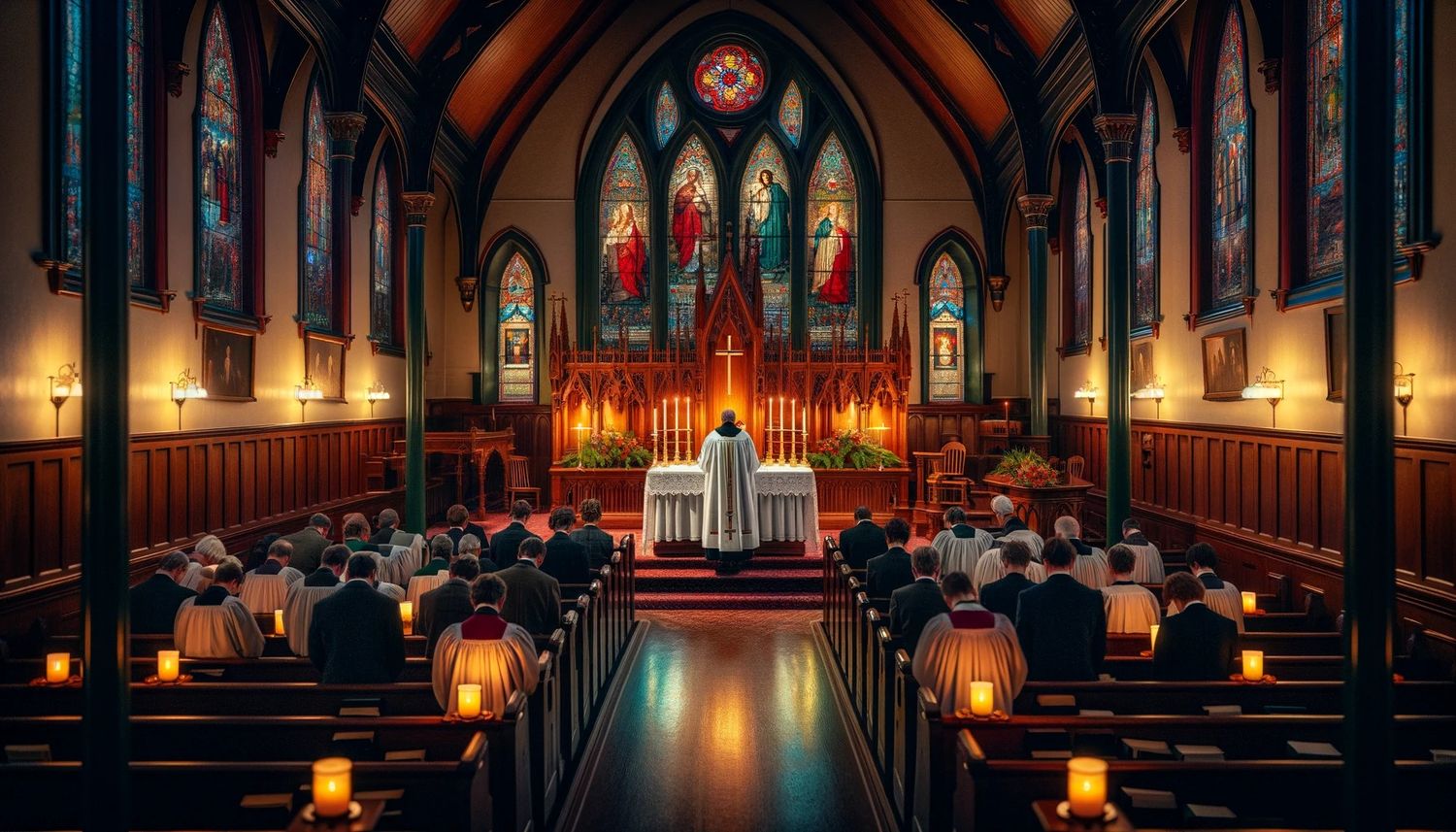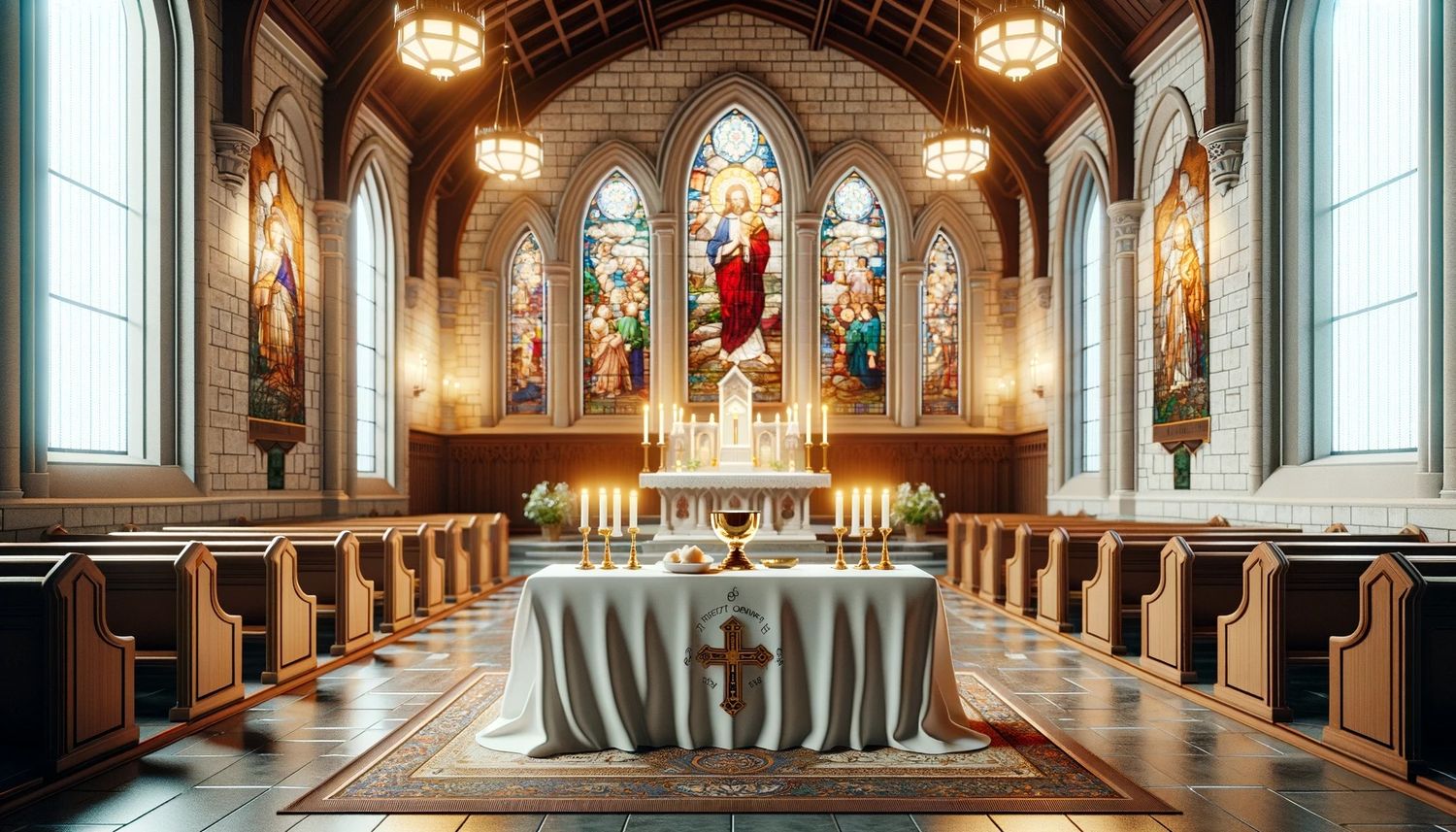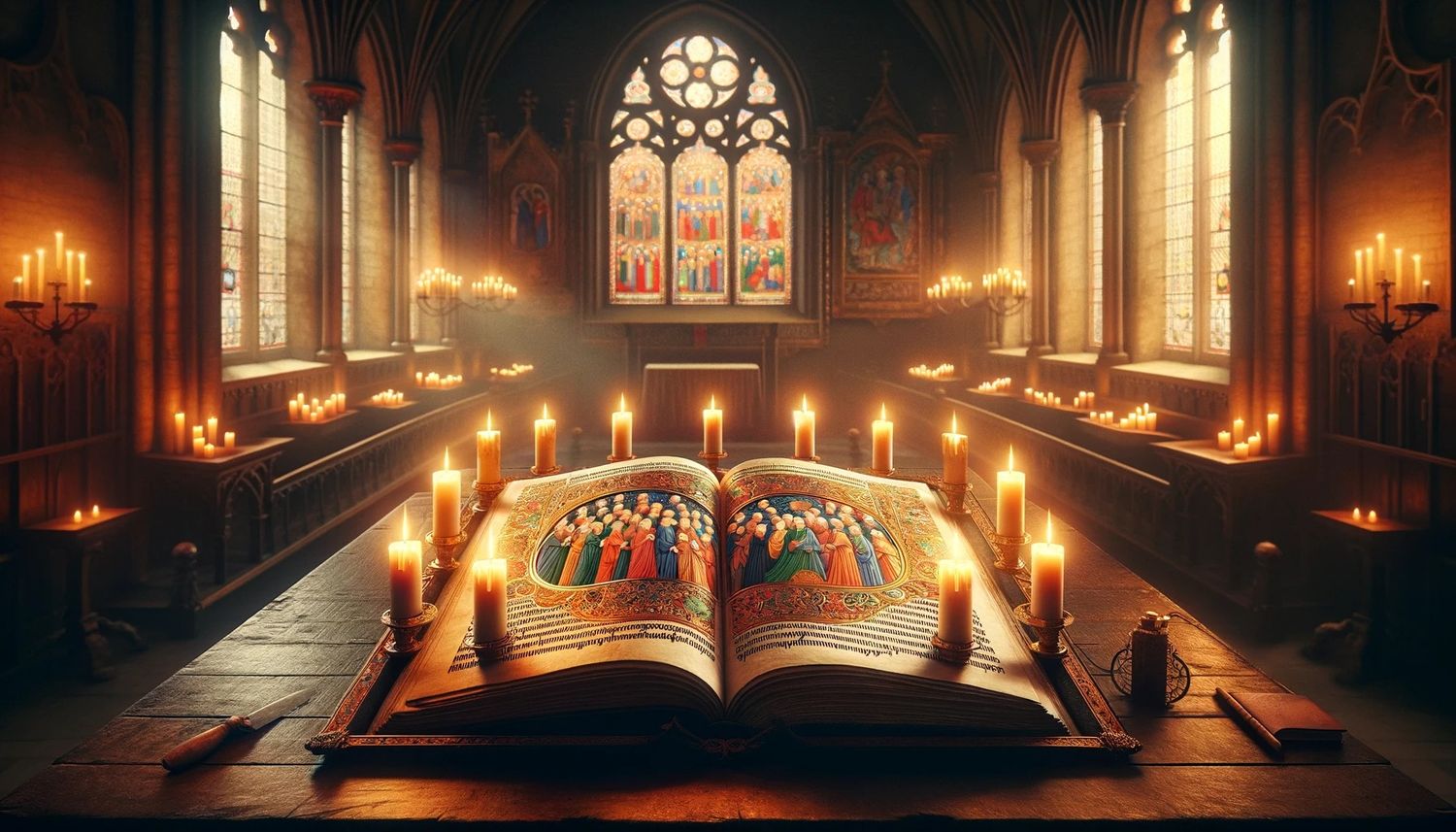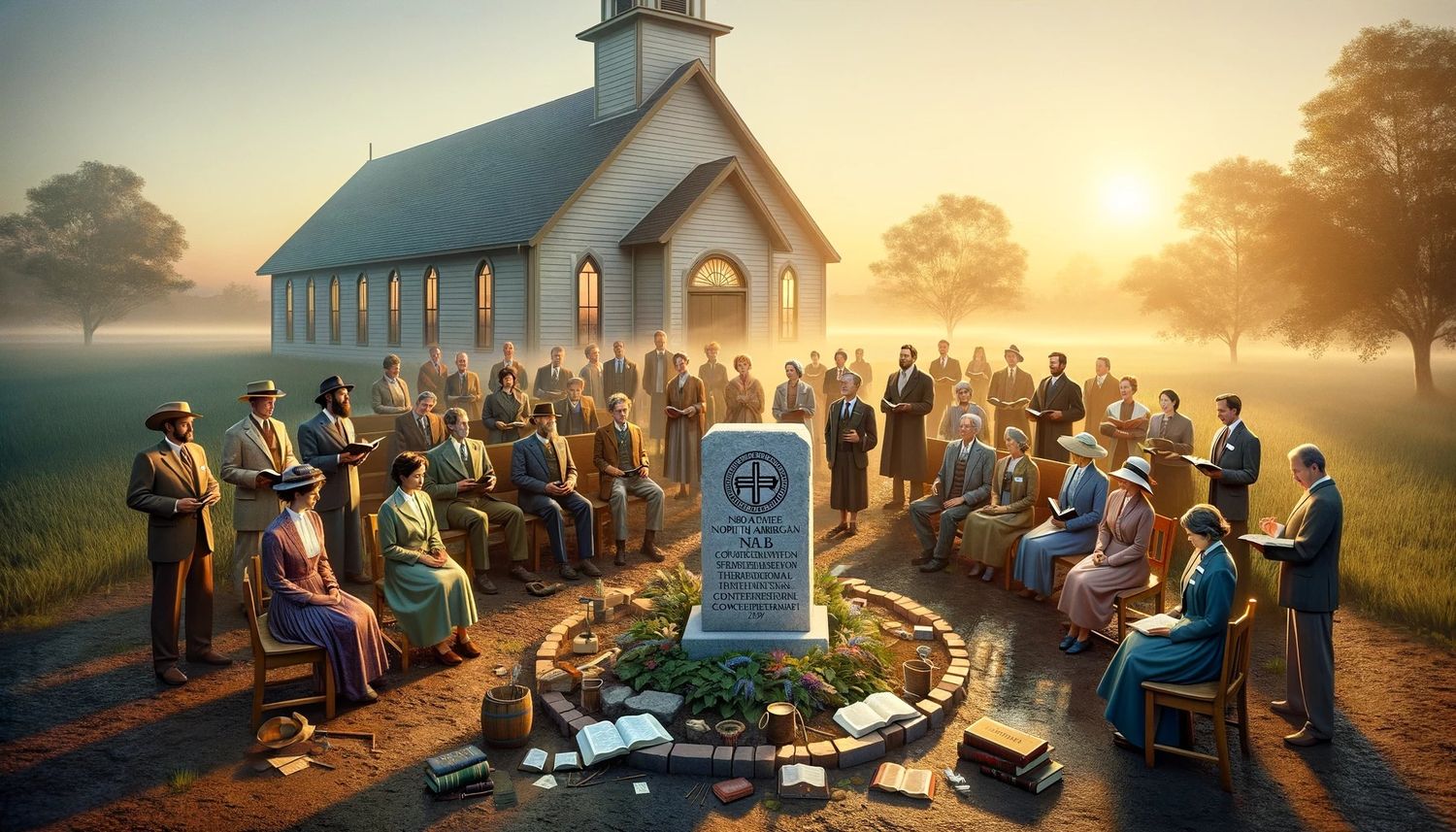Home>Theology and Spirituality>What Is Maundy Thursday In Lutheran Church


Theology and Spirituality
What Is Maundy Thursday In Lutheran Church
Published: March 3, 2024
Jason DeRose, Managing Editor at Christian.net, uses his expertise in religion and journalism to deepen understanding of faith's societal impacts. His editorial leadership, coupled with a strong academic background, enriches the platform’s diverse content, earning him recognition in both journalism and religious circles.
Discover the significance of Maundy Thursday in the Lutheran Church and its impact on theology and spirituality. Explore the traditions and practices associated with this sacred day.
(Many of the links in this article redirect to a specific reviewed product. Your purchase of these products through affiliate links helps to generate commission for Christian.net, at no extra cost. Learn more)
Table of Contents
Introduction
What is Maundy Thursday in the Lutheran Church? Maundy Thursday, also known as Holy Thursday, is a significant day in the Christian calendar, marking the beginning of the Easter Triduum. It commemorates the Last Supper of Jesus Christ with his disciples and the institution of the Eucharist. In the Lutheran Church, Maundy Thursday holds a special place in the liturgical year, as it is a time for reflection, remembrance, and preparation for the celebration of Easter. Let's delve deeper into the significance of Maundy Thursday in the Lutheran Church and explore the traditions and customs associated with this solemn and meaningful day.
The Significance of Maundy Thursday in Lutheran Church
Maundy Thursday holds immense significance in the Lutheran Church for several reasons:
-
Commemoration of the Last Supper: Maundy Thursday is a time for Lutherans to reflect on and commemorate the Last Supper, where Jesus shared bread and wine with his disciples, instituting the sacrament of Holy Communion. This act of sharing the bread and wine symbolizes the sacrificial nature of Jesus' impending death and the establishment of the new covenant.
-
Foot Washing: In some Lutheran congregations, the tradition of foot washing is observed on Maundy Thursday. This act of humility and service is a symbolic reenactment of Jesus washing the feet of his disciples, emphasizing the importance of servant leadership and selfless love.
-
Focus on the Passion of Christ: Maundy Thursday marks the beginning of the Easter Triduum, during which Lutherans focus on the passion, death, and resurrection of Jesus Christ. It is a time for deep reflection on the suffering and sacrifice of Jesus, leading up to the joyous celebration of Easter.
-
Preparation for Good Friday and Easter: Maundy Thursday serves as a spiritual preparation for the commemoration of Good Friday, when Jesus was crucified, and the subsequent celebration of Easter, marking his resurrection. It is a time for Lutherans to engage in prayer, repentance, and contemplation as they anticipate the events of the coming days.
-
Reaffirmation of Faith: For many Lutherans, Maundy Thursday is an opportunity to reaffirm their faith and commitment to following the teachings of Jesus. The solemn observance of this day strengthens the spiritual bond within the congregation and fosters a sense of unity and devotion among believers.
In summary, Maundy Thursday holds profound significance in the Lutheran Church as a time to remember the Last Supper, engage in acts of humility and service, focus on the passion of Christ, spiritually prepare for Good Friday and Easter, and reaffirm one's faith in the teachings of Jesus. It is a day of deep spiritual introspection and communal worship, setting the stage for the culmination of the Easter observance.
Maundy Thursday Traditions in Lutheran Church
-
Holy Communion: One of the central traditions observed in Lutheran churches on Maundy Thursday is the celebration of Holy Communion. This sacrament, also known as the Eucharist, is a reenactment of the Last Supper, where bread and wine are consecrated and shared among the congregation. The act of partaking in Holy Communion on Maundy Thursday serves as a poignant reminder of Jesus' sacrifice and the establishment of the new covenant.
-
Foot Washing: In some Lutheran congregations, the tradition of foot washing is practiced on Maundy Thursday. This act of humility and service is a symbolic reenactment of Jesus washing the feet of his disciples, emphasizing the importance of servant leadership and selfless love. It serves as a powerful visual representation of Jesus' teachings on humility and the call to serve one another.
-
Stripping of the Altar: Another significant tradition in Lutheran churches on Maundy Thursday is the stripping of the altar. This solemn ritual involves removing all decorative elements, such as candles, linens, and other adornments, from the altar and sanctuary. The stripping of the altar symbolizes the desolation and abandonment experienced by Jesus during his arrest and crucifixion, setting the stage for the somber observance of Good Friday.
-
Tenebrae Service: Many Lutheran churches hold Tenebrae services on Maundy Thursday evening. Tenebrae, which means "darkness" or "shadows," is a service of readings, hymns, and gradual extinguishing of candles, symbolizing the approaching darkness of Jesus' crucifixion. The gradual dimming of the lights and the hauntingly beautiful music create a deeply moving and contemplative atmosphere, allowing worshippers to enter into the somber mood of the impending crucifixion.
-
Vigil and Prayer: Maundy Thursday in Lutheran churches often includes a vigil or extended period of prayer and meditation. This vigil may take place after the Maundy Thursday service and can involve quiet reflection, scripture readings, and communal prayers. It provides an opportunity for worshippers to engage in personal and collective contemplation, preparing their hearts and minds for the events of Good Friday and Easter.
In summary, the traditions observed on Maundy Thursday in Lutheran churches, including the celebration of Holy Communion, foot washing, stripping of the altar, Tenebrae services, and vigils, contribute to the rich tapestry of spiritual significance and solemn remembrance associated with this sacred day. These traditions serve to deepen the spiritual experience of worshippers and foster a profound sense of connection to the events leading up to Easter.
The Maundy Thursday Service in Lutheran Church
The Maundy Thursday service in the Lutheran Church is a deeply reverent and contemplative gathering that marks the beginning of the Easter Triduum. The service is characterized by solemn rituals, meaningful traditions, and a profound focus on the Last Supper and the impending crucifixion of Jesus Christ. Here is an overview of the key elements of the Maundy Thursday service in Lutheran churches:
Holy Communion
The central focus of the Maundy Thursday service is the celebration of Holy Communion. This sacrament, also known as the Eucharist, is a reenactment of the Last Supper, where Jesus shared bread and wine with his disciples. In Lutheran churches, the consecration and sharing of the bread and wine during the Maundy Thursday service hold deep spiritual significance, serving as a poignant reminder of Jesus' sacrificial act and the establishment of the new covenant.
Read more: What Is The Lutheran Church
Foot Washing
In some Lutheran congregations, the Maundy Thursday service includes the tradition of foot washing. This act of humility and service is a symbolic reenactment of Jesus washing the feet of his disciples, emphasizing the importance of servant leadership and selfless love. The act of foot washing during the service serves as a powerful visual representation of Jesus' teachings on humility and the call to serve one another.
Liturgical Readings and Hymns
The Maundy Thursday service in Lutheran churches includes specific liturgical readings and hymns that focus on the events of the Last Supper, Jesus' teachings to his disciples, and the impending betrayal and crucifixion. These readings and hymns create a contemplative atmosphere, allowing worshippers to immerse themselves in the solemnity of the occasion and reflect on the significance of Jesus' actions and words during the Last Supper.
Stripping of the Altar
A poignant and solemn ritual that takes place during the Maundy Thursday service is the stripping of the altar. This symbolic act involves removing all decorative elements, such as candles, linens, and other adornments, from the altar and sanctuary. The stripping of the altar serves as a visual representation of the desolation and abandonment experienced by Jesus during his arrest and crucifixion, setting the stage for the somber observance of Good Friday.
Tenebrae Service
Many Lutheran churches hold Tenebrae services as part of the Maundy Thursday observance. The Tenebrae service, which means "darkness" or "shadows," is characterized by readings, hymns, and the gradual extinguishing of candles, symbolizing the approaching darkness of Jesus' crucifixion. The hauntingly beautiful music and the gradual dimming of the lights create a deeply moving and contemplative atmosphere, allowing worshippers to enter into the somber mood of the impending crucifixion.
Vigil and Prayer
Following the Maundy Thursday service, some Lutheran churches hold a vigil or extended period of prayer and meditation. This vigil provides an opportunity for worshippers to engage in personal and collective contemplation, preparing their hearts and minds for the events of Good Friday and Easter. It is a time for quiet reflection, scripture readings, and communal prayers, fostering a sense of spiritual readiness for the culmination of the Easter observance.
In summary, the Maundy Thursday service in the Lutheran Church is a deeply meaningful and contemplative gathering that encompasses the celebration of Holy Communion, the tradition of foot washing, liturgical readings and hymns, the stripping of the altar, Tenebrae services, and periods of vigil and prayer. This service sets the tone for the Easter Triduum, allowing worshippers to engage in profound remembrance, reflection, and spiritual preparation as they journey through the events leading up to Easter.
The Meaning of Maundy in Maundy Thursday
The word "Maundy" in Maundy Thursday has its origins in the Latin word "mandatum," which means "commandment." The significance of the term "Maundy" in the context of Maundy Thursday is deeply rooted in the commandment that Jesus imparted to his disciples during the Last Supper. According to the Gospel of John, Jesus said to his disciples, "A new commandment I give to you, that you love one another: just as I have loved you, you also are to love one another." This act of Jesus, emphasizing the commandment of love and humility, is at the heart of the observance of Maundy Thursday in the Lutheran Church and other Christian denominations.
The "mandatum" or commandment of love and service is symbolically represented in the act of foot washing, which is a traditional practice in many Lutheran congregations on Maundy Thursday. By washing the feet of his disciples, Jesus demonstrated the ultimate act of humility and servanthood, setting an example for his followers to love and serve one another selflessly. The term "Maundy" thus encapsulates the essence of Jesus' commandment to embody love, compassion, and humble service in the Christian faith.
In addition to the commandment of love, the term "Maundy" also encompasses the institution of the sacrament of Holy Communion during the Last Supper. As Jesus shared bread and wine with his disciples, he instructed them to partake in the elements as a remembrance of him. This act of sharing the bread and wine, representing the body and blood of Jesus, signifies the sacrificial nature of his impending death and the establishment of the new covenant between God and humanity. The commandment to partake in the Eucharist as a remembrance of Jesus' sacrifice and the call to love one another are central themes intertwined in the term "Maundy" and the observance of Maundy Thursday in the Lutheran Church.
Furthermore, the term "Maundy" serves as a reminder of the humility and selflessness exemplified by Jesus during the Last Supper. It prompts believers to reflect on the profound act of service and love demonstrated by Jesus, inspiring them to emulate his example in their interactions with others. The commandment of love, the institution of the Eucharist, and the act of humble service are encapsulated in the term "Maundy," underscoring the foundational principles of Christian faith and the significance of Maundy Thursday as a time for deep reflection, spiritual renewal, and communal worship in the Lutheran Church.
In summary, the meaning of "Maundy" in Maundy Thursday encompasses the commandment of love and service, the institution of the sacrament of Holy Communion, and the demonstration of humility and selflessness by Jesus during the Last Supper. It represents the core principles of Christian faith and serves as a focal point for the observance of Maundy Thursday in the Lutheran Church, emphasizing the call to love one another, partake in the Eucharist, and embody the spirit of humble service and compassion.













